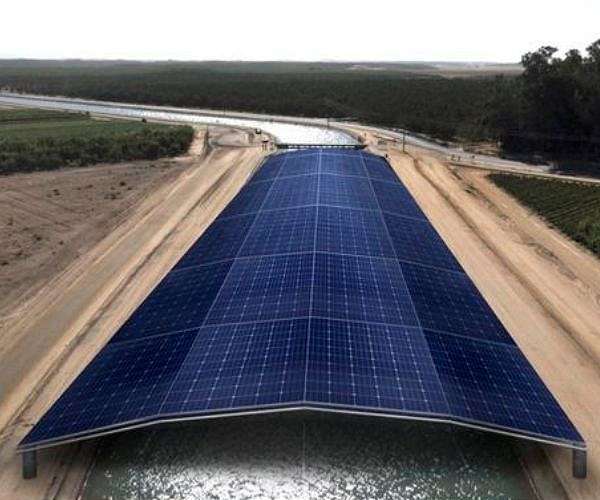Seven universities unite to push solar projects over California Canal System
A coalition of the faculty of seven prominent research institutions, including six based in California, has launched an ambitious initiative aimed at scaling up the use of Arrays of solar panels that are installed on the enormous channel infrastructure of California.
The California Solar Canal Initiative (CSCI), powered by researchers from the USC Dornsife Public Exchange in collaboration with Solar Aquagrid, tries to offer critical data and strategic insights to effectively improve government agencies, tools and communities in the field of Solar Canal systems. Their work builds on a 2021 study from the University of California, Merced, published in the sustainability of nature, which projected that the 4000-MIJL canal network of 4,000 miles with solar panels with solar panels can save land, lower air pollution and retain considerable volumes of water.
The effort has received support from important government agencies that supervise water and energy, including the California Department of Water Resources (DWR), the California Natural Resources Agency (CNRA) and the California Energy Commission (CEC). Researchers will work closely with these authorities to identify ideal locations, to be in accordance with existing land and water policy and to promote cooperation with local communities that are willing to organize such projects.
“California is at the forefront of exploring innovative solutions to tackle climate change and to strengthen our resilience of water and energy,” said CNRA secretary Wade Crowfoot. “We are delighted to see that top research settings come together to help solar panels about water channels implement – a big idea with a great potential. Science -driven collaborations such as these are crucial to lead our way ahead.”
The research team will investigate how solar channels can:
– adjust to shifting energy requirements;
– offer added value that other distributed solar technologies holds;
– Support for existing channel maintenance and operations;
– Follow the current regulatory frameworks for country and water;
– deliver benefits to communities where the infrastructure is used.
Participating settings are USC, UC Merced, UC Berkeley, UC Irvine, UC College of the Law San Francisco, San Jose State University and the University of Kansas. The group brings a multidisciplinary team of scientists together whose work is supported by an advisory board consisting of leaders from the public, private and academic sector. Presained by Solar Aquagrid, this council contains members of DWR, CNRA, CEC, California Forward, New Energy Nexus, Environmental Policy Center and Stanford Water in the West.
Not all channels are suitable for solar development, but the UC Merced Study estimated that the full coverage of the exposed channels of California could:
– Generate sufficient electricity to provide approximately 2 million houses with electricity every year;
– Save enough water to support up to 2 million inhabitants every year;
– Avoid the need to develop up to 50,000 hectares of land by using existing infrastructure.
Additional benefits noted in the study include potential reductions of channel maintenance costs due to shade, increased efficiency of solar panels thanks to the cooling effects of water and creating local vacancies in system installation and maintenance.
Despite in recent years of heavy rainfall and flooding emergencies, California climate scientists warn that the state will continue to experience extreme weather shifts between floods and long -term drought. Given the intensifying impact of climate change, sustainable water use and extensive generation of clean energy crucial priorities remain for the future of California.
The CSCI is in line with the broader environmental ambitions of the state, including the target of 100 percent clean electricity by 2045 and the 30×30 land protection promise. This initiative follows the launch of Project Nexus in 2023, the first pilot of California for solar channels, now under construction in the Central Valley. That project is an example of a public-private academic cooperation between the Turlock Irrigation District, Solar Aquagrid, UC Merced and the California Department of Water Resources.
More information about CSCI, including a media kit, faculty data and research areas, is available at: https://publicexchange.usc.edu/csci-media-kit/.


